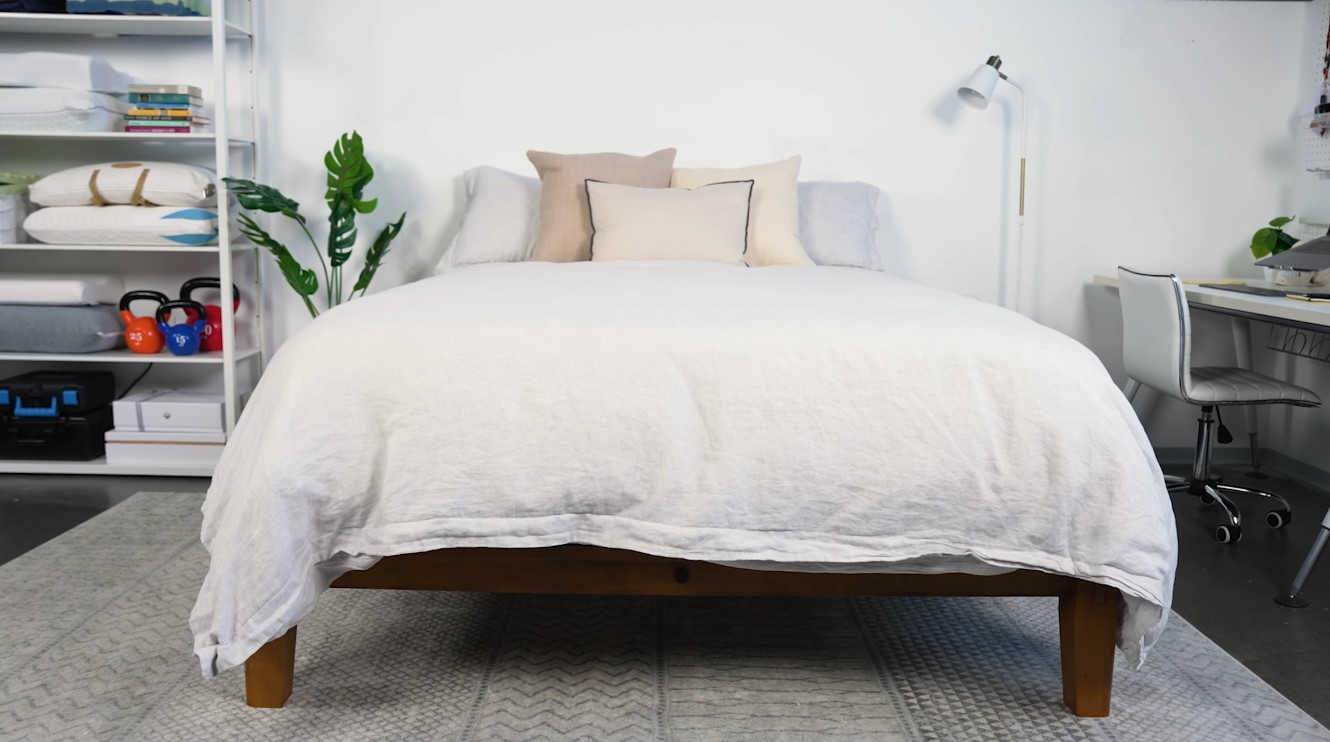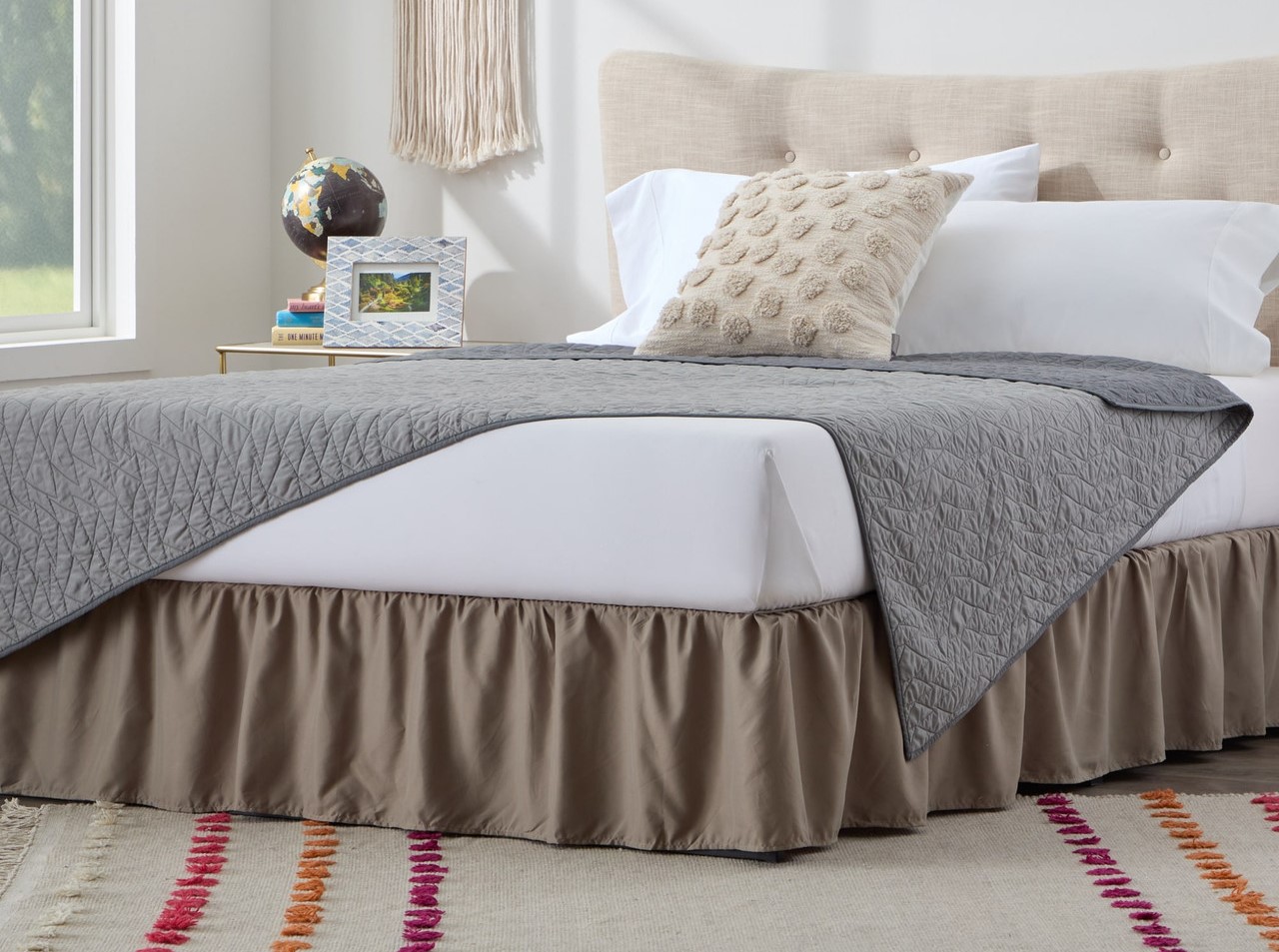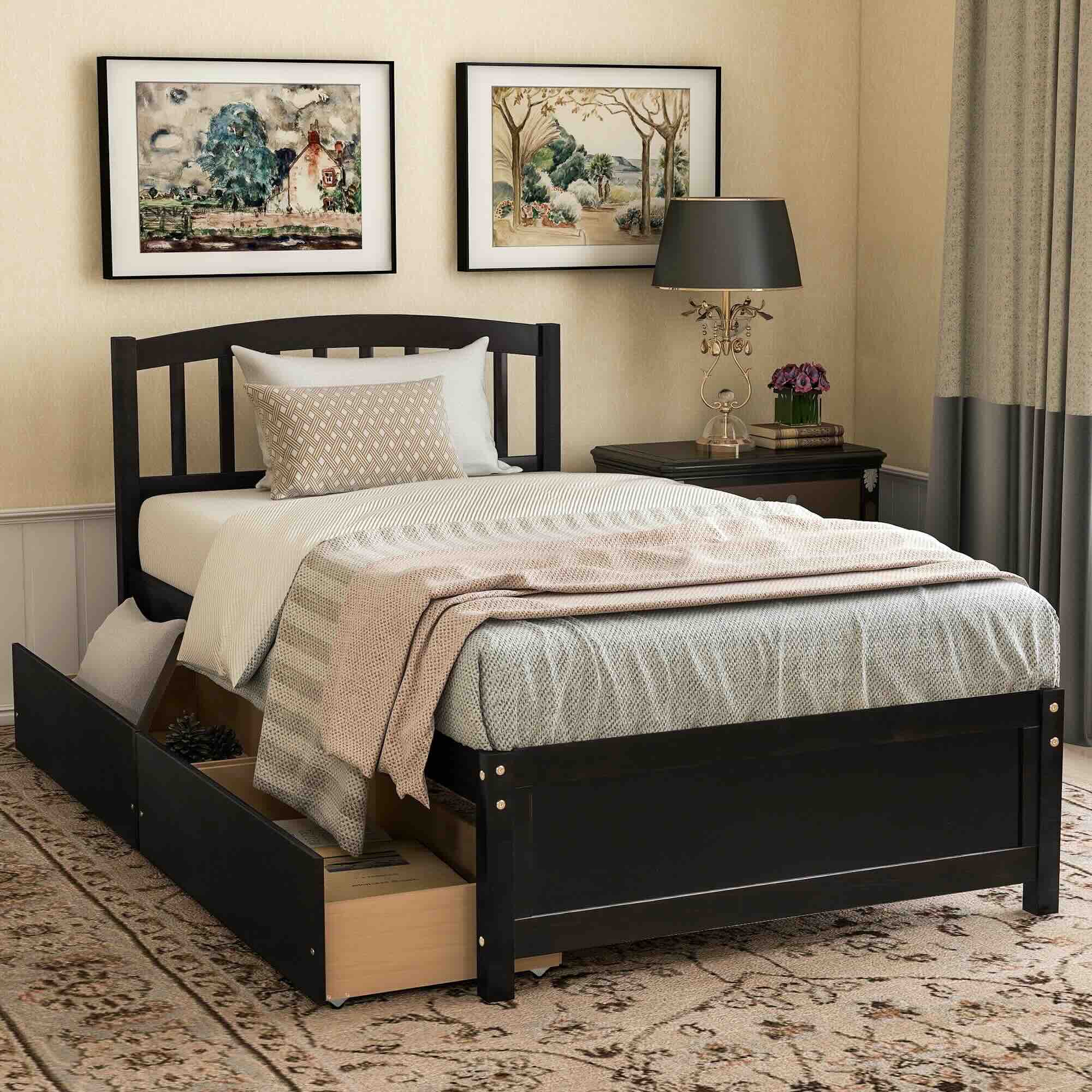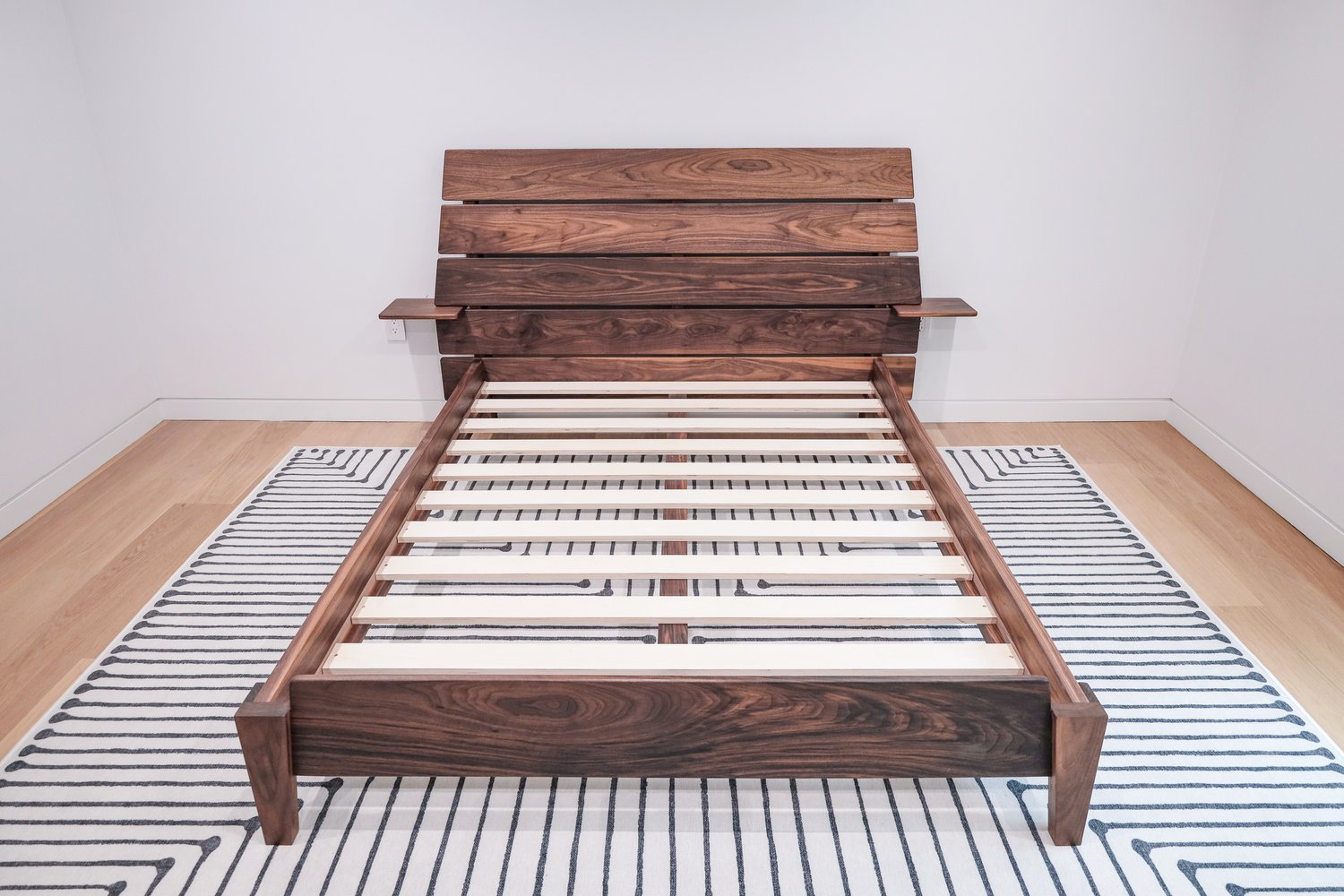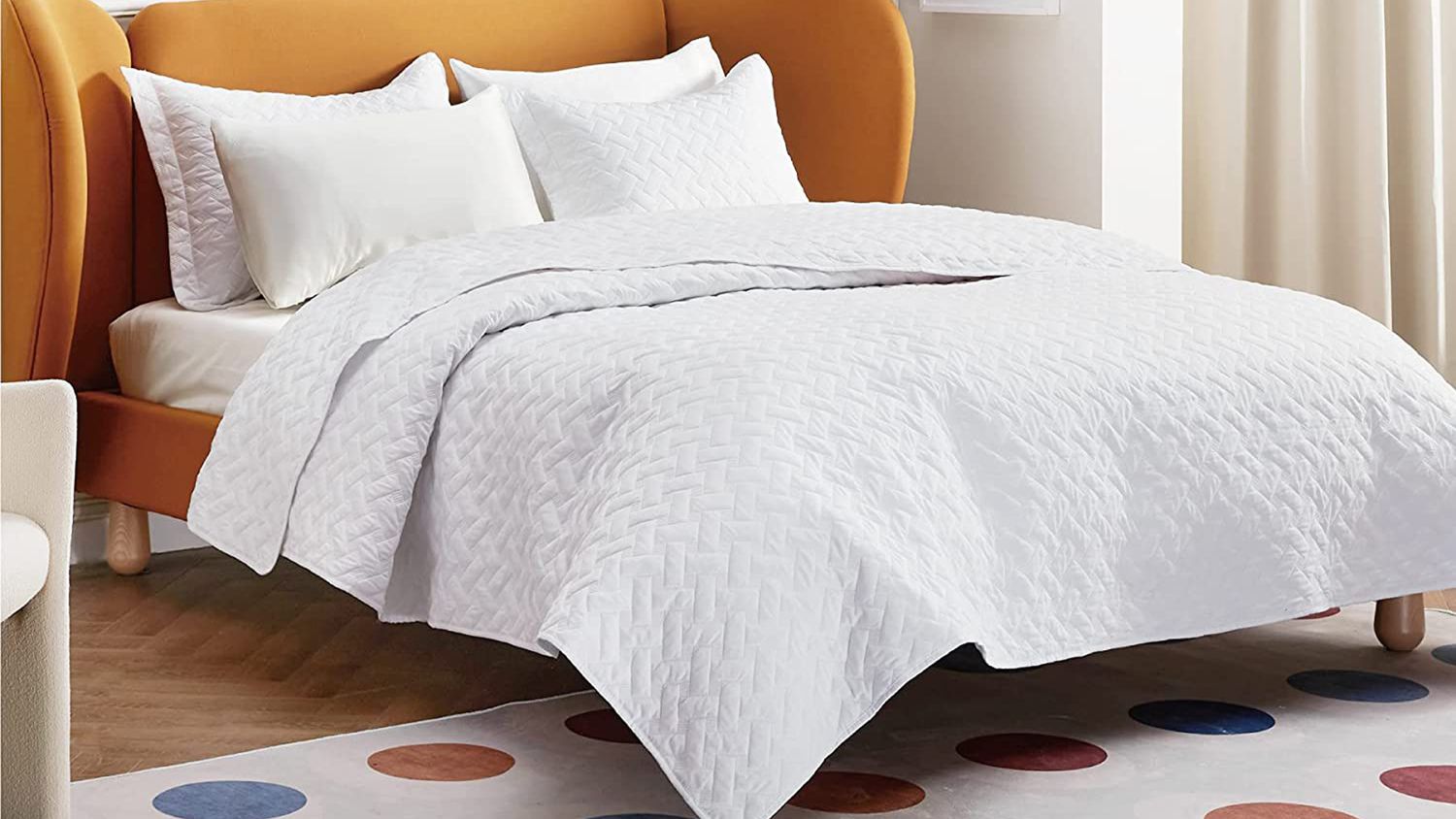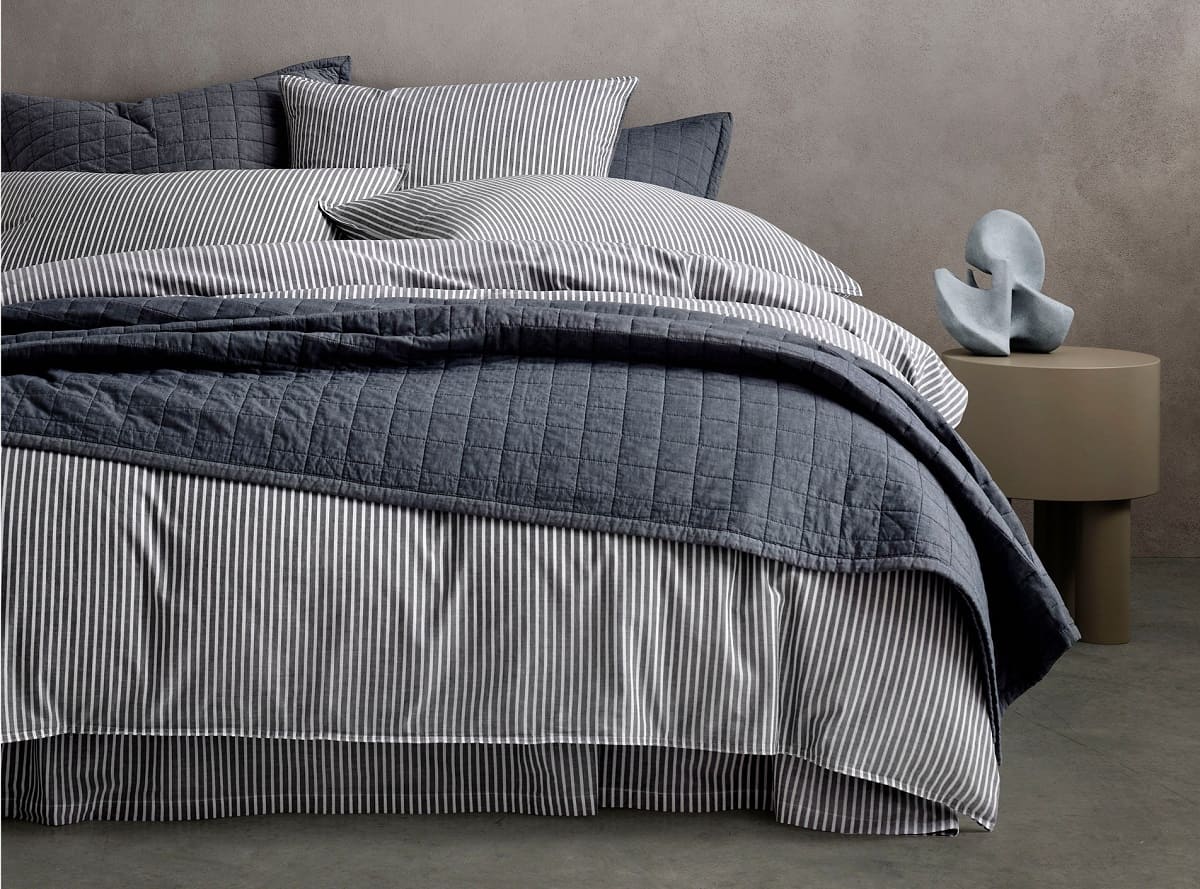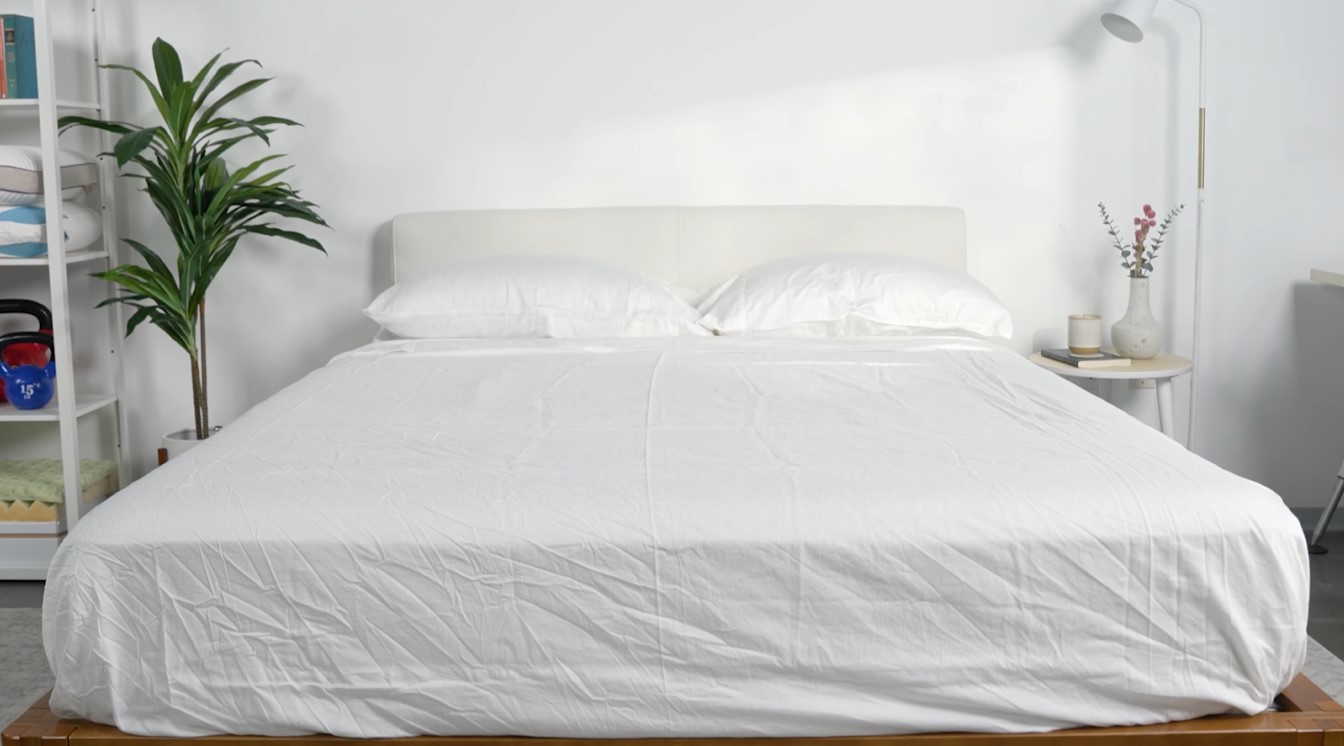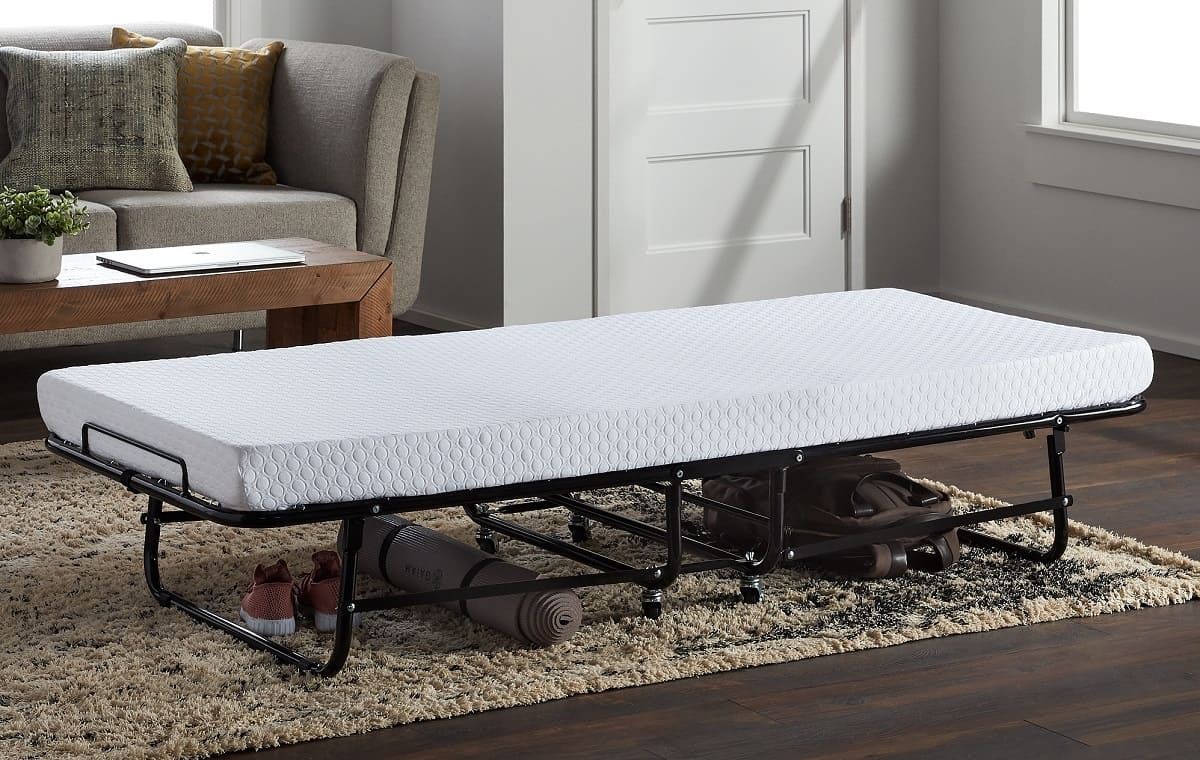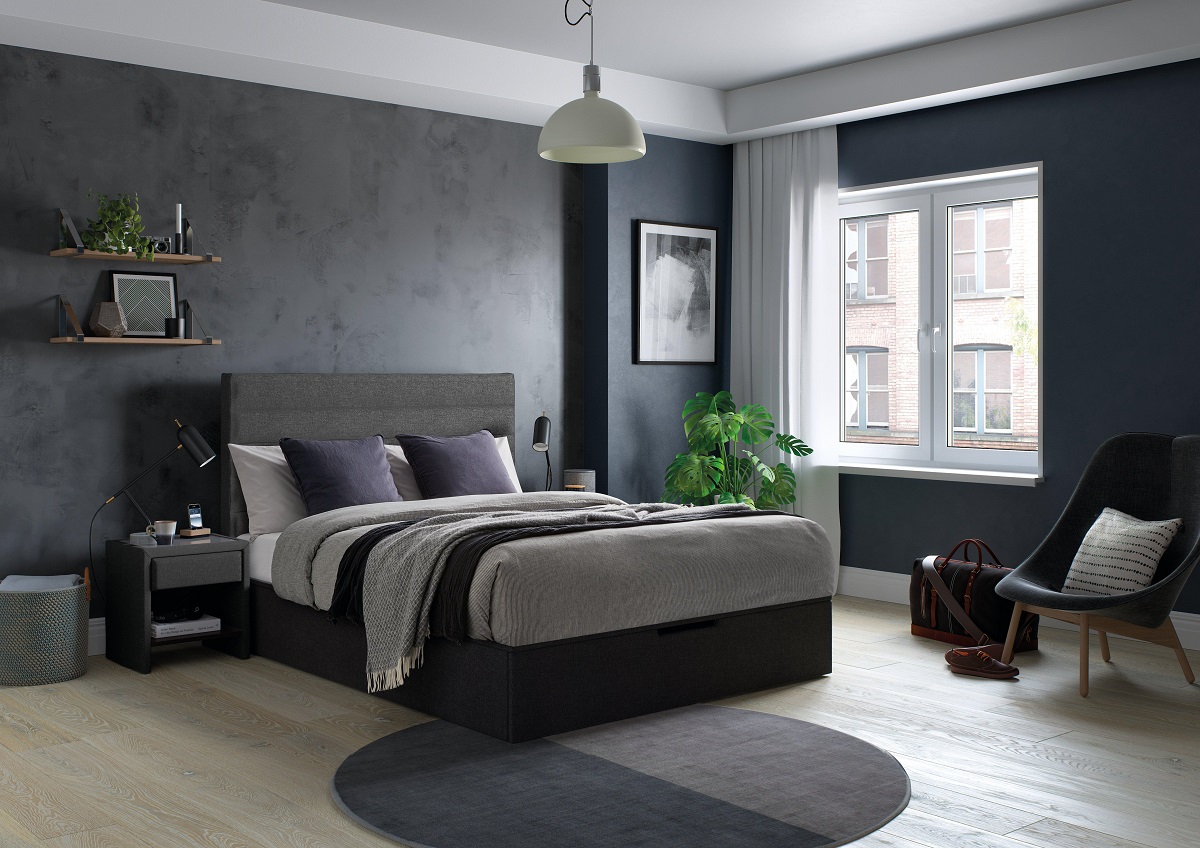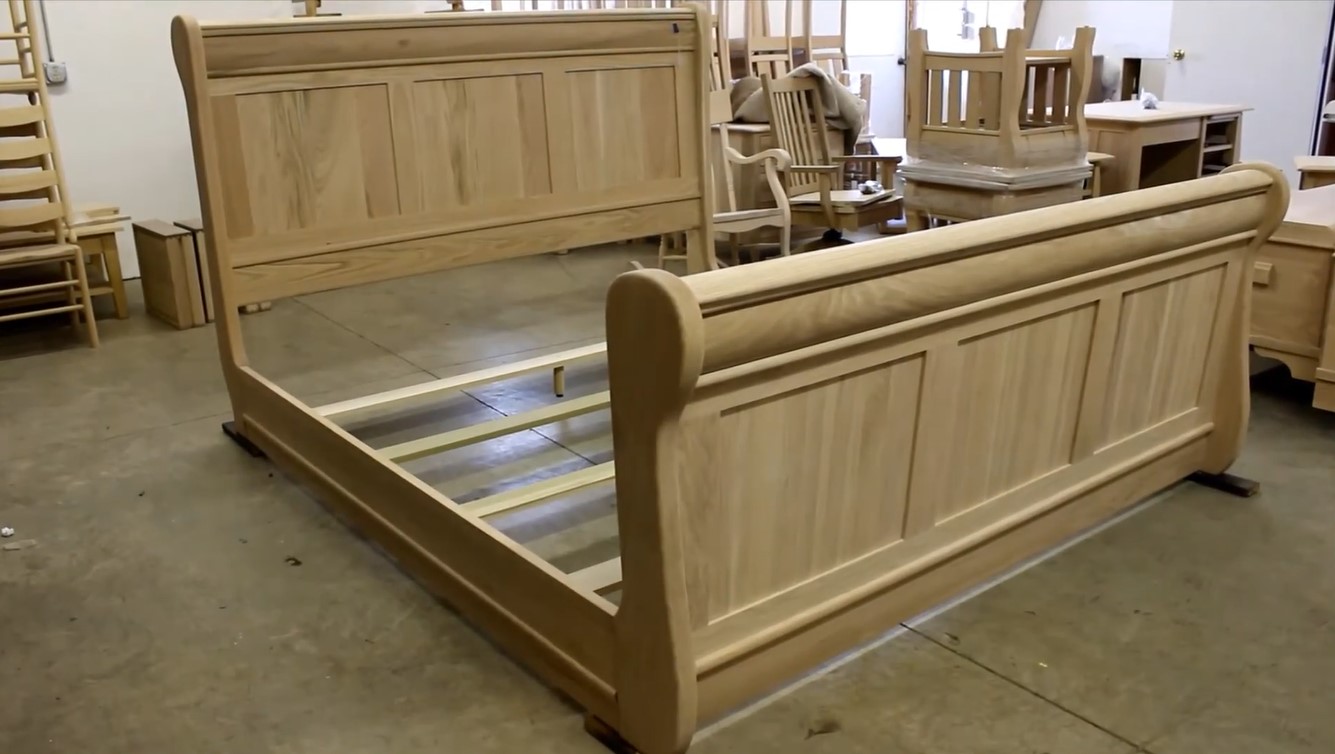Home>Furniture>Bedroom Furniture>What Is A Coverlet For A Bed


Bedroom Furniture
What Is A Coverlet For A Bed
Modified: January 18, 2024
Discover the versatility of coverlets for your bedroom furniture. From adding a layer of warmth to providing an elegant touch, find the perfect coverlet for your bed today.
(Many of the links in this article redirect to a specific reviewed product. Your purchase of these products through affiliate links helps to generate commission for Storables.com, at no extra cost. Learn more)
Introduction
Welcome to the world of bedroom furniture, where every piece plays a crucial role in creating a comfortable and stylish living space. Among these pieces, the coverlet stands out as a versatile and essential addition to your bed ensemble. So, what exactly is a coverlet, and why is it worth considering?
A coverlet is a lightweight, decorative bedding accessory that is placed on top of the sheets and blankets on a bed. It is often used as a stylish layering piece, adding texture, color, and warmth to the overall look of the bed. With its versatility and functionality, a coverlet can instantly transform the appearance of your bedroom, creating a cozy and inviting atmosphere.
The primary purpose of a coverlet is to provide an extra layer of comfort while also adding a touch of elegance to your bed. It differs from a regular blanket or quilt in terms of weight and thickness. Coverlets are typically thinner and lightweight, making them perfect for use during warmer months or in combination with other bedding layers during colder seasons.
One of the greatest advantages of a coverlet is its ability to easily change the look of your bedroom. With various colors, patterns, and designs available, you can easily switch out your coverlet to match different décor styles and seasons. Whether you prefer a minimalist, traditional, or bohemian look, there is a coverlet out there to suit your taste.
There are different types of coverlets to choose from, such as matelassé coverlets, quilted coverlets, and woven coverlets. Each type has its own unique characteristics, providing different levels of warmth and texture. Additionally, coverlets are available in a wide range of materials, including cotton, linen, velvet, and silk, offering varying levels of softness and luxury.
When selecting a coverlet, it’s important to consider the size and fit. Coverlets come in different sizes to accommodate different bed sizes, including twin, full, queen, and king. It’s essential to choose the right size that will properly cover the mattress and drape nicely over the sides of the bed.
In this article, we will delve deeper into the world of coverlets, exploring the different types, materials, and sizes available. We will also provide tips on how to choose the perfect coverlet for your bed and offer ideas on how to style and decorate your bedroom using a coverlet. Additionally, we will discuss maintenance and care instructions to ensure the longevity of your coverlet investment.
So, get ready to embrace the world of coverlets, as we guide you through everything you need to know to add this versatile bedding accessory to your bedroom.
Key Takeaways:
- Embrace the versatility of coverlets, adding style, comfort, and seasonal adaptability to your bedroom. Choose from various types, materials, and sizes to create a cozy and inviting space.
- Elevate your bedroom with a well-chosen coverlet, offering style, warmth, and easy maintenance. Mix and match patterns, textures, and colors to create a personalized and inviting sleeping sanctuary.
Definition of a Coverlet
To fully understand the beauty and functionality of a coverlet, let’s explore its definition and how it differs from other bedding accessories.
A coverlet is a lightweight, decorative bedspread that is typically used as a top layer on your bed. It serves both a practical and aesthetic purpose, adding style and comfort to your sleeping space. Unlike a traditional quilt or comforter, which is usually filled with down or synthetic materials and can be quite bulky, a coverlet is thinner and lighter in weight.
Coverlets are designed to cover the entire surface of the mattress and extend over the sides of the bed, just like a bedspread. However, they are not intended to hang all the way to the floor like a bedspread would. Instead, coverlets are meant to reach the top of the bed skirt or, in the absence of a bed skirt, to hang a few inches below the mattress.
What sets coverlets apart from other bedding options is their versatility. They can be used as standalone bed coverings during warmer seasons or layered with blankets and duvets to add extra warmth during colder months. This adaptability makes coverlets an excellent choice for year-round use.
In terms of design, coverlets come in a wide range of patterns, colors, and textures. From traditional and floral motifs to bold geometric designs and intricate quilting, you can find a coverlet to suit any decor style or personal preference. Whether you prefer a classic, elegant look or a more contemporary and eclectic aesthetic, there is a coverlet out there to match your taste.
Coverlets can also feature different decorative elements, such as scalloped edges, fringes, or embroidered details. These embellishments not only add visual interest but also enhance the overall aesthetic appeal of your bed.
It’s important to note that coverlets are not to be confused with quilts or bedspreads. Quilts are often hand-stitched and filled with batting, providing more warmth and thickness than a coverlet. Bedspreads, on the other hand, are designed to cover the entire bed, reaching the floor, and are typically used as a decorative layer without the need for additional bedding.
Now that we understand what a coverlet is and how it differs from other bedding options, let’s explore the various types and materials available to help you find the perfect coverlet for your bed.
Purpose of a Coverlet
A coverlet serves multiple purposes that go beyond just adding a decorative touch to your bed. Let’s take a closer look at the different functions and benefits of using a coverlet in your bedroom.
1. Style and Aesthetics: One of the primary purposes of a coverlet is to enhance the overall look and feel of your bedroom. It adds a layer of style and sophistication to your bed ensemble, instantly transforming the space. With a wide range of colors, patterns, and textures available, you can choose a coverlet that complements your existing decor or acts as a focal point to make a statement.
2. Versatility: Coverlets are incredibly versatile. They can be used on their own during the warmer months, when you need a lightweight bedding option. When the temperatures drop or if you prefer extra warmth, coverlets can be layered with additional blankets or duvets to provide added coziness without feeling too heavy.
3. Protection: Coverlets offer a protective layer for your bedding, preventing direct contact between you and blankets or sheets. This can help keep your bedding cleaner for longer and reduce the need for frequent washing. Additionally, it acts as a barrier against dust, pet dander, and other allergens, ensuring a healthier sleeping environment.
4. Convenience: Coverlets are easy to use and maintain. Unlike bulky comforters or duvets, coverlets are lightweight and can be easily removed and replaced. This makes making the bed a breeze and allows for easy cleaning or switching out the coverlet when you want to update the style of your bedroom.
5. Layering: A coverlet is an excellent layering piece for your bed. It adds depth and texture, creating visual interest and a more inviting look. By layering a coverlet over your sheets and blankets, you can achieve a professionally styled bed that looks effortlessly cozy and put together.
6. Softness and Comfort: While coverlets are thinner than comforters and duvets, they still provide a level of softness and comfort. Depending on the material used, coverlets can offer a cozy and inviting feel against your skin. Fabrics such as soft cotton or luxurious silk can add an extra touch of indulgence to your sleeping experience.
7. Seasonal Adaptability: With their lightweight nature, coverlets are perfect for year-round use. During the warmer months, they offer just enough warmth and insulation without causing overheating. In colder seasons, you can layer them with heavier blankets or quilts to create a cosier, warmer sleeping environment.
8. Quick Style Update: Looking to refresh the look of your bedroom without breaking the bank? A coverlet can be an inexpensive and effective way to update your bedding and revitalize the entire space. By simply changing your coverlet, you can give your room a whole new look and feel.
As you can see, a coverlet brings more than just aesthetics to your bedroom. It offers versatility, comfort, and convenience, making it a worthwhile addition to your bedding collection. Now that we understand the purpose of a coverlet, let’s explore the different types and materials available, helping you choose the right coverlet for your needs.
Different Types of Coverlets
When it comes to coverlets, there are several different types available, each offering unique characteristics and styles. Let’s explore some of the most popular types of coverlets:
- Matelassé Coverlets: Matelassé coverlets are known for their intricate quilted patterns that create a raised, textured effect. This type of coverlet adds a touch of elegance and sophistication to your bed. Matelassé coverlets often feature geometric designs, florals, or intricate lattice patterns, making them a versatile option that can suit various décor styles.
- Quilted Coverlets: Quilted coverlets are made by stitching together multiple layers of fabric and are known for their warmth and coziness. They can provide added insulation during colder months. Quilted coverlets often feature detailed stitching patterns, ranging from traditional designs to more modern and abstract motifs. With a quilted coverlet, you can add both style and warmth to your bed ensemble.
- Woven Coverlets: Woven coverlets are crafted using a loom, creating a tightly woven, durable fabric. They are typically made from natural fibers like cotton or wool, which add a luxurious and soft feel to the coverlet. Woven coverlets offer a classic and timeless look, often featuring stripes, textured patterns, or intricate jacquard designs.
- Chenille Coverlets: Chenille coverlets are made from a unique fabric called chenille, which is known for its velvety softness. Chenille is created by wrapping short lengths of yarn around a core yarn, resulting in a plush, cozy texture. Chenille coverlets offer a luxurious and comforting feel, perfect for adding a touch of warmth and indulgence to your bed.
- Linen Coverlets: Linen coverlets are made from the fibers of the flax plant, resulting in a lightweight and breathable fabric. Linen coverlets are known for their durability and natural texture. They provide a relaxed and effortless look to your bed, often featuring a soft and slightly wrinkled appearance that adds to their charm. Linen coverlets are ideal for warmer climates or those who prefer a more casual and organic feel in their bedding.
These are just a few examples of the different types of coverlets available in the market. Each type offers its own unique style, texture, and level of warmth. When choosing a coverlet, consider the overall look you want to achieve and the level of comfort you desire.
In addition to the type of coverlet, you also have a wide range of colors, patterns, and sizes to choose from. Whether you prefer a solid color for a clean and minimalistic look, or a bold pattern to make a statement, there is a coverlet out there to fit your personal style and preferences.
Now that we understand the different types of coverlets, let’s dive into the materials used for coverlets, as this plays a significant role in the overall feel and quality of the coverlet.
Materials Used for Coverlets
The materials used for coverlets play a crucial role in their overall feel, appearance, and durability. Let’s explore some of the common materials used to create beautiful and comfortable coverlets:
- Cotton: Cotton is one of the most popular materials used for coverlets. It is widely appreciated for its softness, breathability, and ability to withstand frequent washing. Cotton coverlets are lightweight, making them ideal for warmer climates or as a layering piece. They come in a variety of weaves, including percale, sateen, and jacquard, each offering its own unique texture and visual appeal.
- Linen: Linen is a natural fiber made from the flax plant, known for its durability and breathability. Linen coverlets have a distinctive textured appearance, often featuring a slightly wrinkled look that adds to their charm. They are breathable and moisture-wicking, making them perfect for hot summer nights. Linen coverlets also become softer and more comfortable with each wash, ensuring long-lasting luxury.
- Microfiber: Microfiber is a synthetic material made from ultra-fine fibers. It is known for its softness, lightweight feel, and resistance to wrinkling. Microfiber coverlets are hypoallergenic and moisture-wicking, making them an excellent option for individuals with allergies or those living in humid climates. They are also easy to care for and maintain.
- Velvet: Velvet coverlets add a touch of elegance and luxury to your bed. Velvet is a plush fabric with a soft and smooth texture created by weaving two sets of yarn together. Velvet coverlets provide warmth and a cozy feel, making them perfect for colder seasons. They are available in a range of rich colors and designs, adding a luxurious and sophisticated touch to your bedroom.
- Silk: Silk coverlets exude opulence and luxury. Silk is a natural protein fiber produced by silkworms. Silk coverlets are incredibly soft, lustrous, and smooth to the touch. They offer a lightweight and breathable option, providing both warmth and coolness as needed. Silk coverlets are hypoallergenic and naturally regulate body temperature, making them an excellent choice for those with sensitive skin or allergies.
These are just a few examples of the materials commonly used to create coverlets. Each material has its own unique characteristics and benefits, allowing you to choose the one that aligns with your personal preferences and comfort needs.
When selecting a coverlet based on the material, it’s essential to consider factors such as climate, personal preference for softness or crispness, and maintenance requirements. Additionally, it’s worth noting that coverlets can be made from a blend of materials, combining the features and benefits of various fabrics.
Now that we understand the different materials used for coverlets, let’s move on to discussing the size and fit of coverlets to ensure you find the perfect fit for your bed.
A coverlet is a lightweight bedspread that is typically used as a decorative layer on top of the bed. It can be used on its own in warmer weather or layered with a comforter for added warmth in colder months. When choosing a coverlet, consider the size of your bed, the material, and the design to complement your bedroom decor.
Size and Fit of Coverlets
The size and fit of a coverlet are crucial factors to consider to ensure it complements your bed properly and creates a polished and cohesive look. Here’s what you need to know about the size and fit of coverlets:
1. Standard Bed Sizes: Coverlets come in various sizes to match standard bed sizes, including twin, full, queen, and king. It’s essential to choose the correct size that corresponds to your mattress dimensions to ensure the coverlet provides adequate coverage and hangs nicely over the sides of the bed.
2. Measurements: The measurements of a coverlet can vary depending on the manufacturer, so it’s essential to check the specific measurements for each size. Standard measurements for coverlets are as follows:
- Twin: Approximately 68 inches wide by 90 inches long
- Full: Approximately 84 inches wide by 90 inches long
- Queen: Approximately 90 inches wide by 96 inches long
- King: Approximately 108 inches wide by 96 inches long
3. Fit: The fit of a coverlet refers to how well it covers the mattress and hangs over the sides of the bed. Ideally, a coverlet should drape nicely over the sides of the bed, covering the mattress and any underlying layers, such as fitted sheets and blankets. It should reach the top of the bed skirt or, in the absence of a bed skirt, hang a few inches below the mattress.
4. Drop: The drop of a coverlet refers to the length of fabric that hangs down from the top of the mattress to the desired point. It affects both the aesthetic and practical aspects of the coverlet. A longer drop can create a more elegant and luxurious look, while a shorter drop may be more practical for ease of movement around the bed. Consider your personal preference and the style you wish to achieve when choosing the drop length.
When selecting a coverlet, it’s essential to measure your mattress to determine the appropriate size. Keep in mind that coverlets are typically sized to accommodate a certain amount of overhang on each side of the bed, creating a more aesthetically pleasing look. If you prefer a smaller or larger overhang, you may need to adjust the size accordingly.
It’s also worth considering the thickness of your mattress when choosing a coverlet size. If you have a thicker mattress or use a mattress topper, you may need to size up to ensure the coverlet fully covers the mattress and any additional layers.
Remember, the size and fit of the coverlet can significantly impact the overall appearance and functionality of your bed. Take your time to measure and consider your options to ensure the perfect fit for your specific bed dimensions and personal preferences.
Now that we have covered the size and fit of coverlets, let’s delve into the exciting topic of choosing the right coverlet for your bed.
How to Choose the Right Coverlet for Your Bed
Choosing the right coverlet for your bed is an important decision that can greatly impact the overall look and feel of your bedroom. Here are some factors to consider when selecting the perfect coverlet:
1. Bed Size: Start by determining the size of your bed – whether it’s twin, full, queen, or king. This will help you narrow down your options and ensure a proper fit. Remember to consider the thickness of your mattress and any additional layers, such as mattress toppers or foam pads.
2. Style and Design: Consider the overall style and design of your bedroom. Do you prefer a minimalist, modern look, or a more traditional and ornate style? Look for a coverlet that complements the existing décor and color scheme. Consider factors such as patterns, colors, and textures that will harmonize with your bedroom’s aesthetic.
3. Material: Think about the material that appeals to you the most. Cotton and linen are popular choices for their breathability and softness. Microfiber offers a smooth and wrinkle-resistant option. Velvet and silk provide a luxurious and opulent feel. Choose a material that suits your comfort preferences and aligns with the desired ambiance of your bedroom.
4. Climate and Season: Take into account the climate of your location and the seasonal variations. If you live in a warmer climate, opt for lightweight materials like cotton or linen that offer breathability and moisture-wicking properties. For colder climates, consider warm and cozy materials like quilted coverlets or velvet for added insulation.
5. Color and Pattern: The color and pattern of the coverlet can greatly influence the overall mood and style of the room. Decide whether you want the coverlet to serve as a bold focal point or blend harmoniously with the existing décor. Consider the colors and patterns that resonate with you and create the desired ambiance in your bedroom.
6. Durability and Maintenance: Assess the durability of the fabric and its ability to withstand regular use and frequent washing. Check the care instructions to ensure that the coverlet is easy to clean and maintain. Consider factors such as shrinkage, color fading, and fabric pilling when making your decision.
7. Budget: Set a budget for your coverlet purchase. With a wide range of options available, you can find coverlets to fit different budgets. Decide how much you are willing to invest and explore options that offer good quality and value within your budget range.
8. Read Reviews: Before finalizing your purchase, take the time to read customer reviews and ratings. This can provide insights into the quality, comfort, and durability of the coverlet you are considering. Pay attention to feedback regarding fabric quality, color accuracy, and overall customer satisfaction.
By considering these factors, you can find the perfect coverlet that not only complements your bed but also reflects your personal style and creates a comfortable and inviting atmosphere in your bedroom.
Now that you have chosen the right coverlet, let’s move on to the fun part – styling and decorating with a coverlet.
Styling and Decorating with a Coverlet
A coverlet is not only a functional bedding accessory but also a beautiful decorative element that can elevate the style of your bedroom. Here are some tips for styling and decorating with a coverlet:
1. Layer with Pillows and Shams: Create a luxurious and inviting look by layering your coverlet with decorative pillows and shams. Mix and match different sizes, patterns, and textures to add depth and visual interest to your bed. Consider using Euro shams, standard pillows, and accent pillows to achieve a well-coordinated and stylish arrangement.
2. Fold and Drape: Experiment with different folding and draping techniques to showcase your coverlet. You can fold it neatly at the foot of the bed for a clean and minimalist look or drape it gracefully over the sides of the bed for a more relaxed and effortless feel. Play around with different styles to find the one that best suits your bedroom’s aesthetic.
3. Mix and Match: Don’t be afraid to mix and match patterns and textures with your coverlet. Pair it with patterned sheets or blankets for a layered and dynamic look. Consider complementing or contrasting color schemes to create visual interest and a cohesive overall design. Have fun experimenting with different combinations to find the perfect balance.
4. Accessorize with Throws and Blankets: Enhance the cozy vibe of your bed by adding throws or blankets to accompany your coverlet. Layering with a soft, textured throw or a cozy knit blanket can not only provide extra warmth but also add a touch of visual interest and dimension to your bedroom decor.
5. Coordinate with Curtains or Drapes: For a cohesive and harmonized look, consider coordinating your coverlet with curtains or drapes in your bedroom. Choose curtains or drapes in complementary colors or patterns to create a unified and well-designed space. This coordination can help tie together different elements and create a polished and sophisticated aesthetic.
6. Add Accents with Decorative Objects: Incorporate decorative objects, such as vases, candles, or artwork, to enhance the overall aesthetic of your bedroom. Place them strategically on side tables or dressers to add personality and style to the room. Consider choosing objects that complement the colors or textures of your coverlet to create a cohesive and well-curated look.
7. Consider the Bed Skirt: If you choose to have a bed skirt, ensure that it complements the coverlet. A bed skirt can provide a finished look and hide the under-bed area, creating a neat and polished appearance. Choose a bed skirt in a color or pattern that coordinates with the coverlet to maintain a cohesive design.
Remember, styling and decorating with a coverlet is all about personal preference and creativity. Feel free to experiment, mix different elements, and let your unique sense of style shine through. The goal is to create a cozy, visually appealing, and inviting space.
Now that we have explored the styling aspect of coverlets, let’s move on to discussing the maintenance and care needed to keep your coverlet looking its best.
Maintenance and Care for Coverlets
To ensure your coverlet stays in optimal condition and continues to enhance the beauty of your bedroom, it’s important to follow proper maintenance and care practices. Here are some tips on how to care for your coverlet:
1. Read and Follow Care Instructions: Always start by reading the care instructions provided by the manufacturer. Each coverlet may have specific care requirements, so it’s essential to follow these instructions to avoid damaging the fabric or compromising its quality.
2. Regular Cleaning: To keep your coverlet fresh and clean, it’s recommended to wash it regularly. Check the care instructions for the appropriate washing method, whether it’s machine washing, hand washing, or dry cleaning. Some coverlets can be machine washed on a gentle or delicate cycle, while others may require more delicate care.
3. Use Mild Detergents: When washing your coverlet, opt for a mild detergent that is suitable for the fabric type. Harsh detergents can cause color fading or damage the fibers. Avoid using bleach or harsh chemicals, as they can weaken the fabric and affect its longevity.
4. Separate Colors: If your coverlet has multiple colors or patterns, consider washing it separately or with similar colors to prevent color bleeding or fading. This helps maintain the vibrancy and integrity of the coverlet.
5. Gentle Cycle and Low Heat: When using a washing machine, select a gentle or delicate cycle. Wash the coverlet in cool or lukewarm water to avoid excessive shrinkage. Similarly, when drying, use a low heat setting or air dry if recommended by the care instructions. High heat can damage certain fabrics and cause them to lose their shape or shrink.
6. Ironing and Steaming: If your coverlet requires ironing, follow the instructions on the care label. Use a low heat setting and place a thin cloth or pressing cloth between the iron and the coverlet to avoid direct contact. Alternatively, you can use a garment steamer to remove wrinkles and creases without the need for direct heat.
7. Spot Cleaning for Small Stains: For small stains or spills, try spot cleaning the affected area instead of washing the entire coverlet. Blot the stain gently with a clean cloth and a mild detergent solution. Avoid rubbing the fabric vigorously, as it can damage the fibers. Always test any cleaning solution on a small, hidden area of the coverlet before applying it to the stain.
8. Protect from Sunlight: Direct sunlight exposure can cause color fading and damage the fabric over time. Whenever possible, protect your coverlet from prolonged sunlight exposure by using curtains or blinds. If sunlight is unavoidable, consider rotating the coverlet periodically to ensure even fading.
9. Store Properly: When not in use, store your coverlet in a cool, dry place away from direct sunlight. Avoid storing it in plastic bags, as this can trap moisture and lead to mold or mildew growth. Instead, use a breathable fabric bag or wrap the coverlet in acid-free tissue paper to protect it from dust and insects.
By following these maintenance and care tips, you can extend the lifespan of your coverlet and keep it looking fresh and beautiful for years to come.
Now that we’ve covered the maintenance and care aspects, let’s conclude our journey through the world of coverlets.
Read more: What Is A Bed
Conclusion
Coverlets are a versatile and essential addition to any bedroom. They offer both style and functionality, adding a layer of comfort, warmth, and visual appeal to your bed. Whether you’re looking to refresh the look of your bedroom or enhance the overall ambiance, a well-chosen coverlet can make a significant difference.
Throughout this article, we’ve explored the definition of a coverlet and its purpose in a bedroom setting. We’ve looked at the different types of coverlets available, including matelassé, quilted, woven, chenille, and linen coverlets, each offering its own unique characteristics. We’ve discussed the materials used for coverlets, such as cotton, linen, microfiber, velvet, and silk, to help you find the right fabric for your comfort and style preferences.
We’ve also discussed the importance of selecting the appropriate size and fit for your coverlet, ensuring it properly covers your mattress and creates a polished look. We’ve provided tips on how to choose the right coverlet for your bed based on factors like style, design, material, climate, and budget.
Furthermore, we’ve shared ideas on how to style and decorate with a coverlet, including layering with pillows, mixing patterns and textures, coordinating with curtains, and adding accents with decorative objects. Proper maintenance and care for your coverlet were also discussed, emphasizing the importance of following care instructions, regular cleaning, using mild detergents, and protecting the fabric from sunlight.
By considering all of these factors and following our recommendations, you can find the perfect coverlet that not only enhances the aesthetic appeal of your bedroom but also provides you with a cozy and comfortable sleeping experience.
Remember, your bedroom is a reflection of your personal style and should be a sanctuary where you can relax and unwind. The right coverlet can set the tone for your entire space, creating a warm and inviting atmosphere where you can retreat and rejuvenate.
So, whether you’re looking to add a pop of color, a touch of luxury, or a cozy layer to your bed, explore the world of coverlets and discover the endless possibilities they offer. Choose a coverlet that speaks to your unique style and preferences, and enjoy transforming your bedroom into a haven of comfort and beauty.
Frequently Asked Questions about What Is A Coverlet For A Bed
Was this page helpful?
At Storables.com, we guarantee accurate and reliable information. Our content, validated by Expert Board Contributors, is crafted following stringent Editorial Policies. We're committed to providing you with well-researched, expert-backed insights for all your informational needs.
